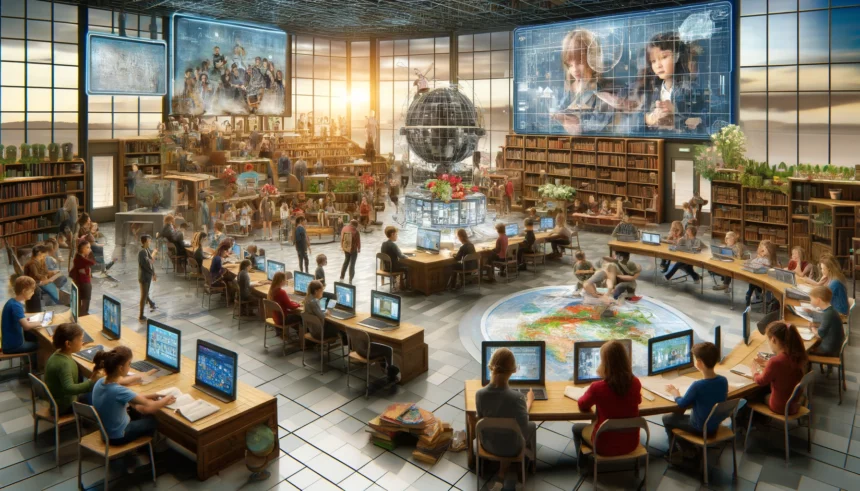Education has always been a cornerstone of society, and the infusion of technology into this realm is transforming the traditional learning landscapes from elementary schools to university halls. Here’s how modern tech tools are making education more personalized, engaging, and effective.
Personalized Learning Journeys
Tailored Lessons: Digital platforms enable educators to tailor lessons for individual students. Tools like adaptive learning software fine-tune task difficulty based on a student’s performance, ensuring optimal challenge without overwhelming them.
Boosting Engagement Through Technology
Interactive Tools: Technologies such as multimedia videos, interactive simulations, and virtual reality (VR) bring subjects to life in ways textbooks simply can’t. Imagine exploring ancient civilizations or the cardiovascular system through VR—these tools make learning vivid and engaging.
Collaboration Without Borders
Global Connectivity: With tools like discussion boards and document sharing platforms, students can collaborate across continents, preparing them for a global workforce and broadening their worldviews.
Instant Knowledge Access
Boundless Resources: The internet opens up a treasure trove of resources—latest research, e-books, and academic journals are all just a click away, fostering a culture of curiosity and independent learning.
Building Digital Fluency
Digital Literacy: Today’s students need to navigate technology adeptly. Schools are responding by embedding digital literacy in their curricula, ensuring students are equipped to thrive in the digital era.
Streamlining Tasks with Tech
Management Tools: Technologies like digital hall pass systems streamline administrative tasks, enhance security, and minimize disruptions, keeping the focus on learning.
Navigating Challenges
Despite its benefits, technological integration isn’t without challenges. Issues such as unequal access to tech resources can widen the digital divide, and over-reliance on tech might diminish important face-to-face interactions.
Practical Tips for Integrating Technology
- Start Small: Introduce user-friendly tools like Google Classroom gradually.
- Offer Training: Ensure everyone is confident in using new technologies through regular training sessions.
- Encourage Creativity: Promote the use of tech for creative expression—have students create digital presentations or blogs.
Things to Keep in Mind
- Accessibility: Make sure all students have equal access to technology.
- Balance: Maintain a healthy balance between technology use and traditional learning activities.
- Privacy: Choose digital tools that safeguard student data and privacy.
FAQs
What are the best beginner-friendly educational technologies?
Platforms like Quizlet and TED-Ed are great starting points for engaging students with user-friendly technology.
How does technology enhance student engagement?
Tech offers dynamic, interactive learning resources that capture students’ interest and motivate them to engage with the material.
Can technology replace traditional teaching methods?
No, technology should complement, not replace, traditional teaching to create a holistic educational experience.
Conclusion
As we forge ahead in this new era of education, it’s crucial to leverage technology not just as a tool for efficiency but as a bridge to deeper knowledge and understanding. By thoughtfully integrating tech with traditional educational practices, we can ensure an inclusive, effective learning environment for all students.
















